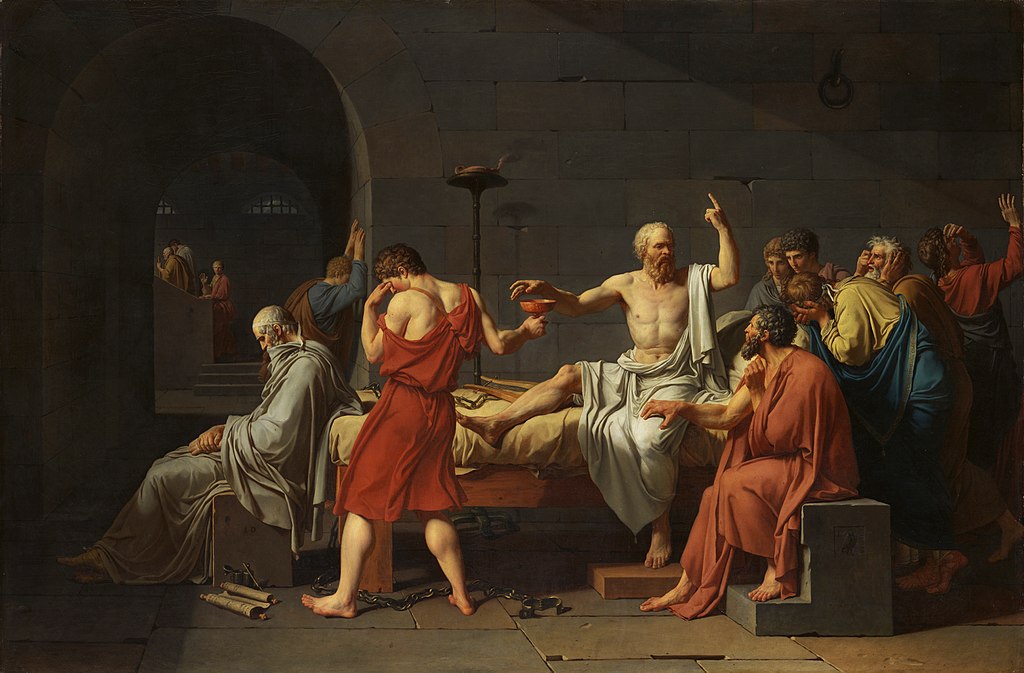Isaac and Demetria go back in time to answer the age-old question: if Socrates was such a great philosopher, why couldn’t he figure out not to drink all that poison? That plus long digressions about the nature of democracy and medieval theology (of course)!
Featured Image: The Death of Socrates, painted in 1787 by Jacques-Louis David, a French painter famous for the Neoclassical style. As you look at these images of Socrates created throughout history, think about how they reflect on their creators and what they were trying to say by borrowing classical/neoclassical aesthetics. Jacques-Louis was so enamored of the classical era that he voted to execute King Louis XVI just a few years later because a republican government was a more classical style of governance. Unfortunately for him, his friendships with revolutionaries–particularly with his buddy Robespierre–didn’t work out so well in the long run. As Robespierre was arrested, David yelled “If you drink hemlock, I shall drink it with you”–a strange little callback to Socrates. (Image source)
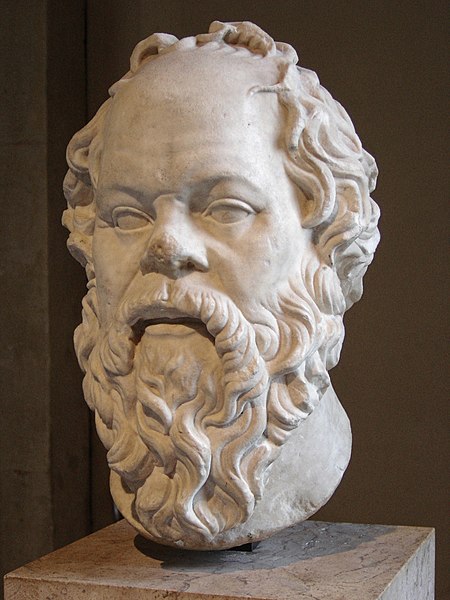
A Roman bust of Socrates, possibly a copy of an older bronze statue. (Image source)
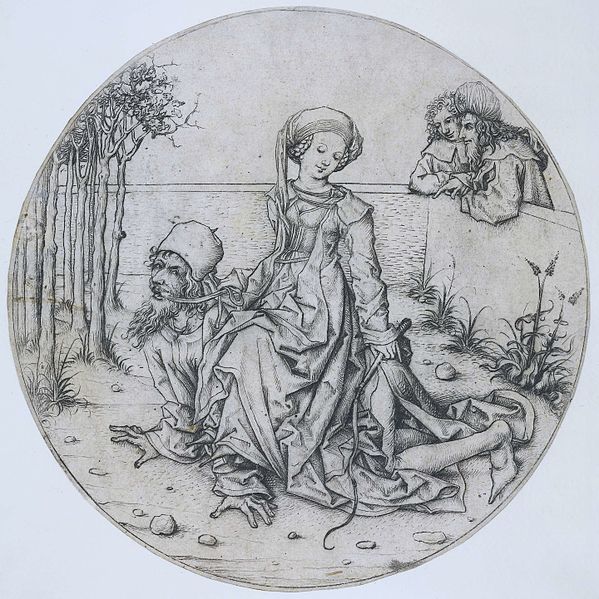
A lot of teachers will try to tell you that Greek philosophy was “forgotten” in the middle ages and “rediscovered” in the Rennaisance. This is not true. Greek philosophy was studied throughout the medieval period, and we know this because they got extremely weird with it. Here’s a fairly late depiction from 1490 of a story that was in circulation from at least the 1200s, in which Aristotle is ridden around like a horse by a sexy dominatrix. I am absolutely not kidding about this and I strongly encourage you to read more about it. (Image source)
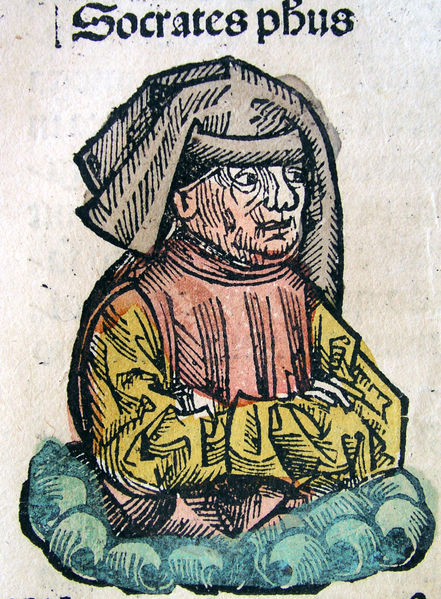
Socrates depicted in the Nuremberg Chronicle, wearing clothing and a beardless style from the late 1400s. As we’ve discussed in other episodes, medieval artists didn’t really care about anachronism when they recreated ancient scenes, and often depicted classical and biblical figures in whatever styles were contemporary to their own time. (Image source)

Speaking of anachronistic outfits, here’s Socrates in an illustrated manuscript of the work of Al-Mubashshir ibn Fatik, an Arabic scholar who lived in Egypt during the 11th century CE. Arabic scholars both preserved classical philosophy and advanced the study of logic, medicine, and mathematics in the middle ages. If your teacher told you that the entirety of the medieval era was the dark ages and we were saved from that ignorance by a bunch of Christian guys who liked painting fat babies on churches, I would like to have a word with them. (Image source)
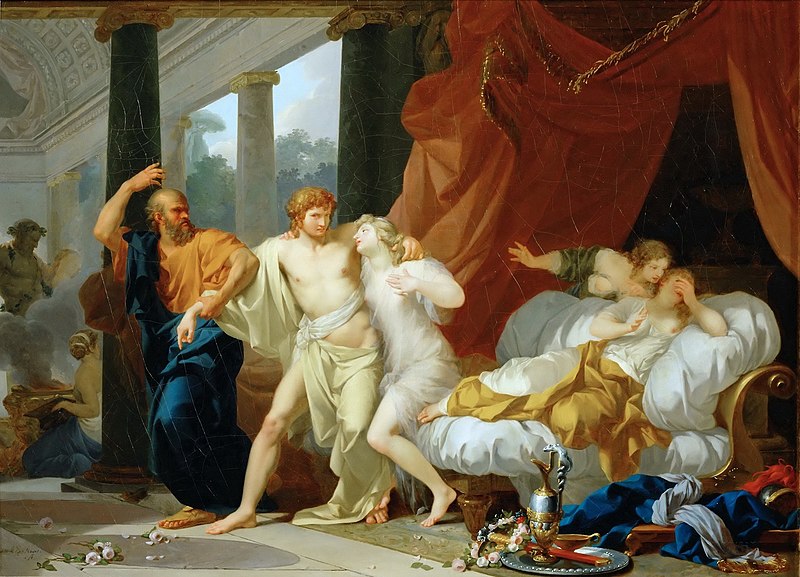
Another French painter’s take on Socrates. In this painting, he’s tearing Alcibiades away from the embrace of sensual pleasure. Notice how carefully sensual pleasure, in the form of women with their tits out, has been depicted in this painting. Quite a lot of neoclassical painters cottoned on to the fact that classical scenes were a great excuse for painting women with their tops off. Once again I am not joking. (Image source)

Speaking of excuses for sexy paintings, Socrates’ sexual relationship with his student Alcibiades was a popular subject for artists who wanted to show queer relationships. This scene by erotic painter Édouard-Henri Avril is more explicit than most, but Alcibiades pops up in various states of undress throughout art history. Some historians mark an anonymously published Italian dialogue from 1652 called Alcibiades the Schoolboy as the first homosexual novel. Fans of Isaac’s podcast should hopefully be quick to point out that The Tale of Genji predates it by a good 600 years and features a bisexual protagonist. (Image source)
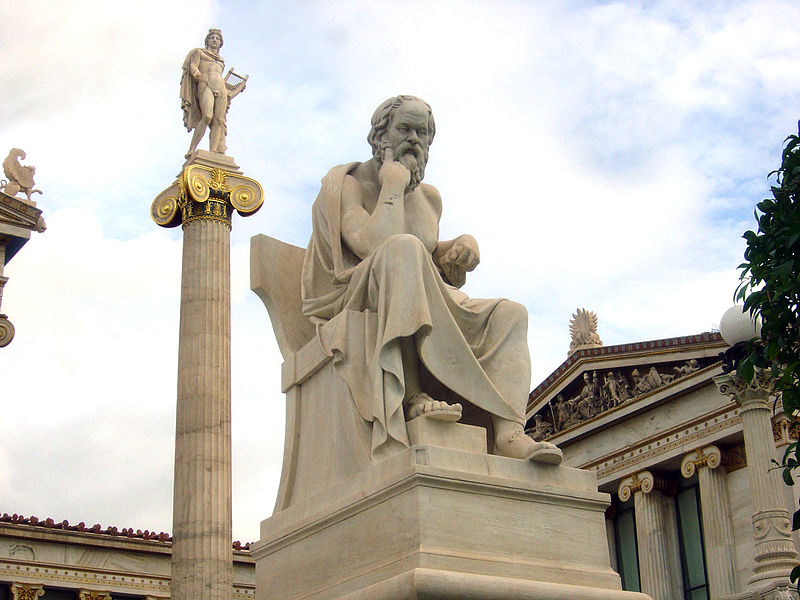
A modern statue of Socrates by Leonidas Drosis outside the Academy of Athens. This take on Socrates is still referencing a somewhat anachronistic image of ancient Greece, with pure white unpainted marble and a pose that evokes the famous Rodin statue of The Thinker. But don’t worry, there’s still a guy with his dick out. (Image source)
